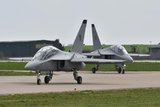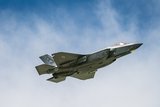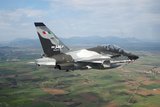Northrop Grumman has successfully completed dozens of test flights of its EMRIS sensor with new software deployed during flights as demonstration of the reconfigurable nature of the sensor.
EMRIS’s fully digital Active Electronically Scanned Array (AESA) utilises technology from the Defense Advanced Research Projects Agency’s Arrays on Commercial Timescales programme, combined with the government’s open architecture standards.
By applying the flexibility of a digital AESA, EMRIS can perform multiple functions including radar, electronic warfare and communications, simultaneously.
As part of EMRIS’ flights, Northrop Grumman demonstrated the ability to quickly leverage technologies developed for other programs to adapt multiple fielded capabilities into EMRIS.
The second EMRIS array is entering testing, and Northrop Grumman is in the process of demonstrating its scalable nature by fabricating two smaller EMRIS apertures for lower cost and size-constrained application demonstrations.
The company has not identified particular applications for EMRIS but the technology is compact enough to fit in a small UAS and is designed to be configurable enough to be part of future platforms involving a range of aircraft sizes.
As part of the integration and test phase, Northrop Grumman is demonstrating the ability to leverage technology developed for other programmes to adapt multiple fielded capabilities into EMRIS.
The sensor’s design leverages commercial processes and materials, including the 5G tech base, driving down cost and increasing the quality and reliability of the components, according to the company.
Krys Moen, vice president, advanced mission capabilities, Northrop Grumman said: “Dozens of successful flights with EMRIS demonstrated the ability to reduce development timelines and lower programme costs by leveraging our partnerships with, and advancements across, all military services.”






















